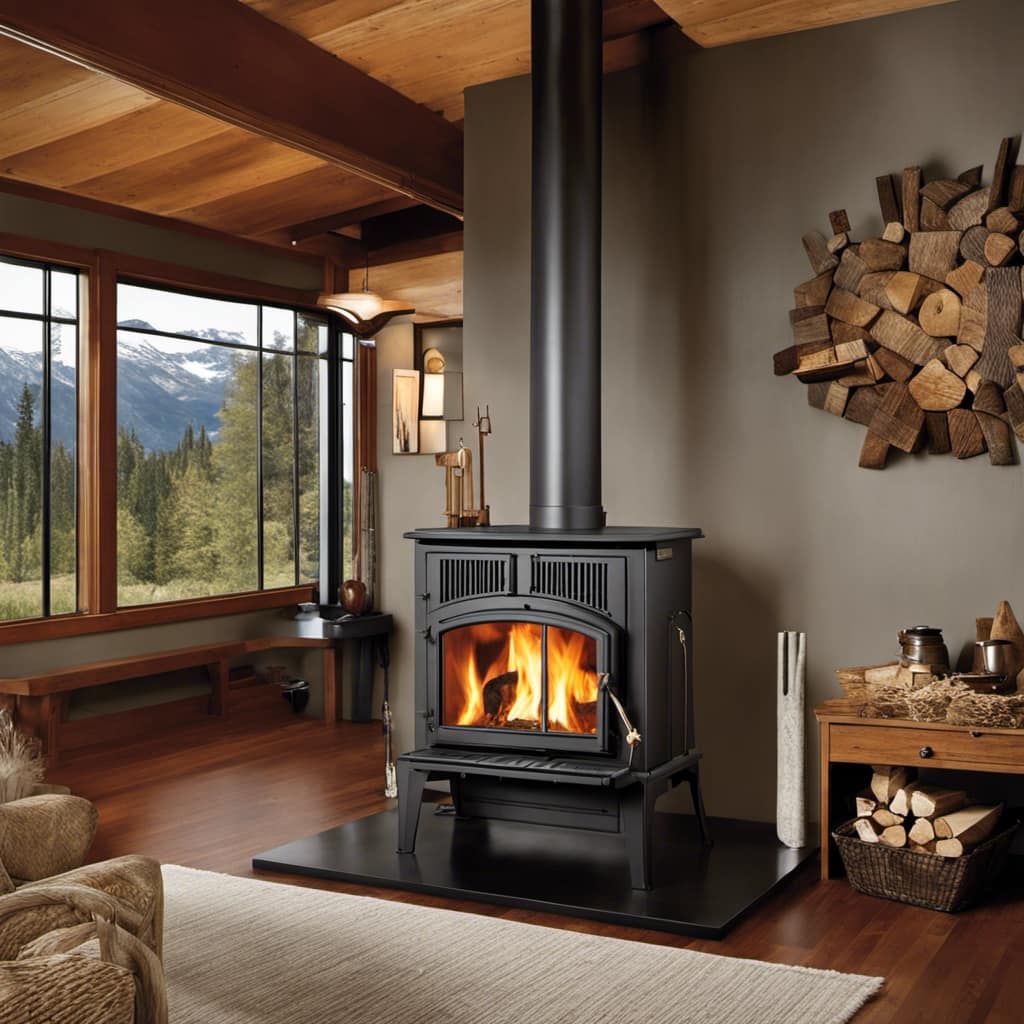
As a fan of wood stoves, I have found that a key way to improve their performance is by getting fiberglass rope.
This simple yet effective method ensures a tight seal, preventing heat loss and enhancing safety.
In this guide, I’ll provide you with step-by-step instructions on choosing the right fiberglass rope, preparing the surface, applying high-temperature adhesive, and securely wrapping the rope around your wood stove.
Don’t let a loose seal dampen your wood stove’s performance – let’s get started!
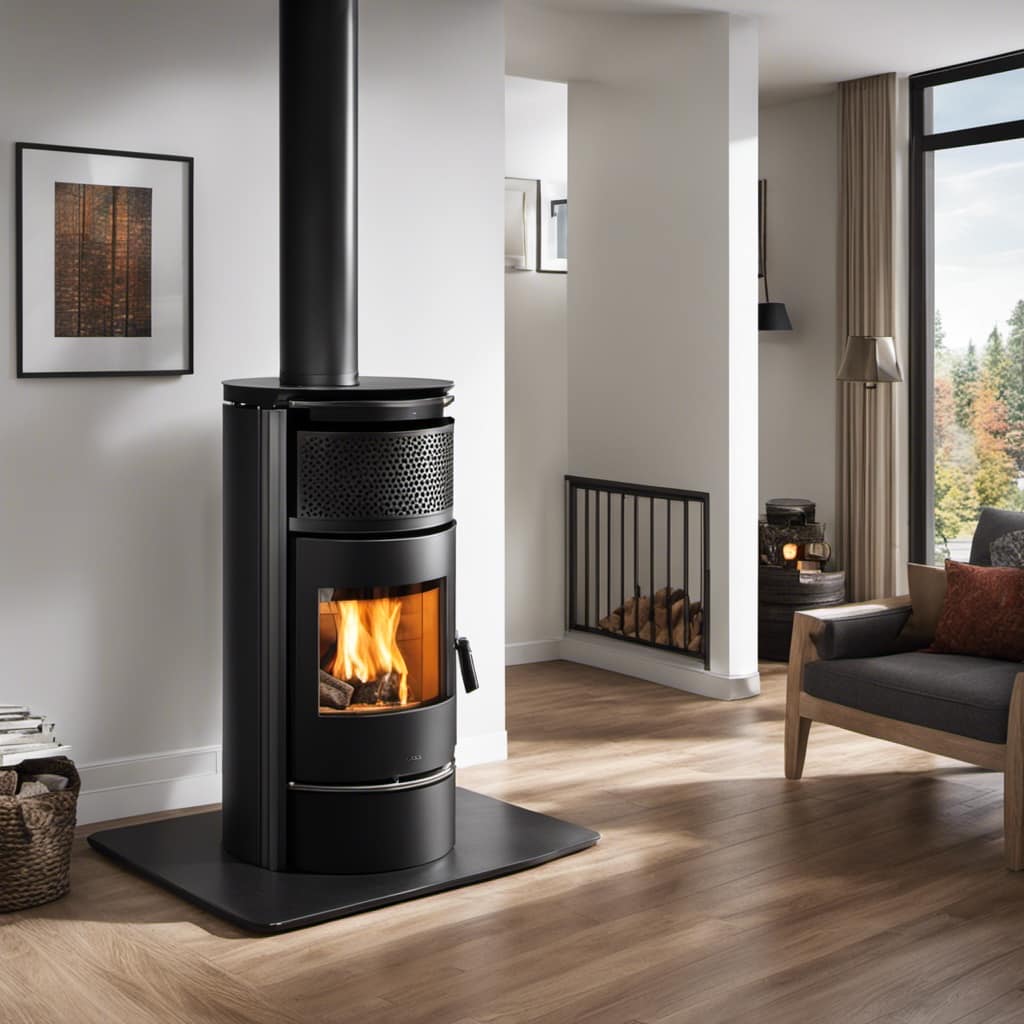
Key Takeaways
- Fiberglass rope provides an effective seal to prevent smoke and gases from leaking on wood stoves.
- Using fiberglass rope increases the efficiency of the stove and reduces the risk of carbon monoxide poisoning.
- Fiberglass rope is highly durable and can withstand high temperatures, abrasion, and chemicals.
- The process of fastening fiberglass rope to a wood stove involves cleaning the surface, applying high-temperature adhesive, and wrapping and fastening the rope for a secure seal.
Choosing the Right Fiberglass Rope for Your Wood Stove
I’m having trouble choosing between the different options for fiberglass rope to use in my wood stove. Selecting suitable fiberglass rope is crucial for ensuring the proper functioning and safety of the wood stove.
There are several benefits of using fiberglass rope on wood stoves. Firstly, it provides an effective seal, preventing any smoke or gases from leaking out of the stove. This not only increases the efficiency of the stove but also reduces the risk of carbon monoxide poisoning.
Secondly, fiberglass rope is highly durable and can withstand high temperatures, ensuring long-lasting performance. Additionally, it’s resistant to abrasion and chemicals, making it ideal for use in a wood stove.
When choosing fiberglass rope, it’s important to consider factors such as the diameter, density, and temperature rating to ensure the best fit for your wood stove.

Preparing the Surface for Fiberglass Rope Installation
To ensure a secure installation, I need to clean the wood stove’s surface before attaching the fiberglass rope. The cleaning process is crucial to remove any dirt, grease, or old adhesive that may hinder the rope’s adherence.
First, I’ll start by using a sanding technique to smooth out any rough patches on the surface. This will ensure a better bond and prevent any future damage.
I’ll then proceed with the cleaning process, using a mild detergent and warm water to remove any remaining residue. After thoroughly rinsing and drying the surface, I can proceed with attaching the fiberglass rope using a high-temperature adhesive.
Following these steps will guarantee a strong and long-lasting attachment of the rope to the wood stove.
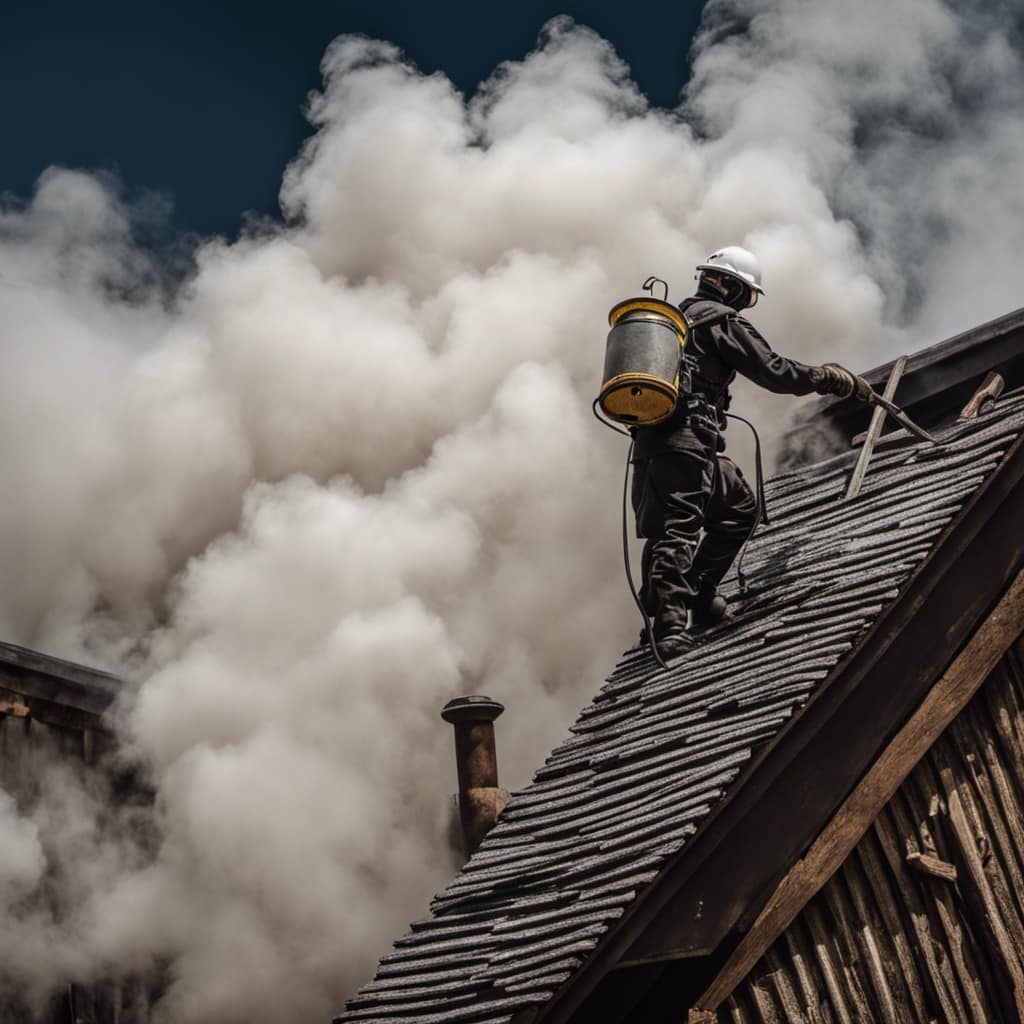
Applying High-Temperature Adhesive to Secure the Fiberglass Rope
After cleaning the wood stove’s surface, I can now apply the high-temperature adhesive and secure the fiberglass rope in place. This process is crucial to ensure the proper functioning of the stove and to prevent any leakage of smoke or gases. Here’s how it’s done:
-
Prepare the adhesive: Using alternative adhesives specifically designed for high temperatures is important for this task. These adhesives have excellent bonding properties and can withstand extreme heat without deteriorating.
-
Apply the adhesive: Start by applying a thin, even layer of the adhesive onto the cleaned surface of the wood stove. Make sure to cover the entire area where the fiberglass rope will be attached.
-
Secure the fiberglass rope: Gently press the fiberglass rope onto the adhesive, ensuring that it adheres firmly. Smooth out any wrinkles or gaps to achieve a tight seal. The benefits of using fiberglass rope instead of gaskets include its flexibility, durability, and resistance to high temperatures.
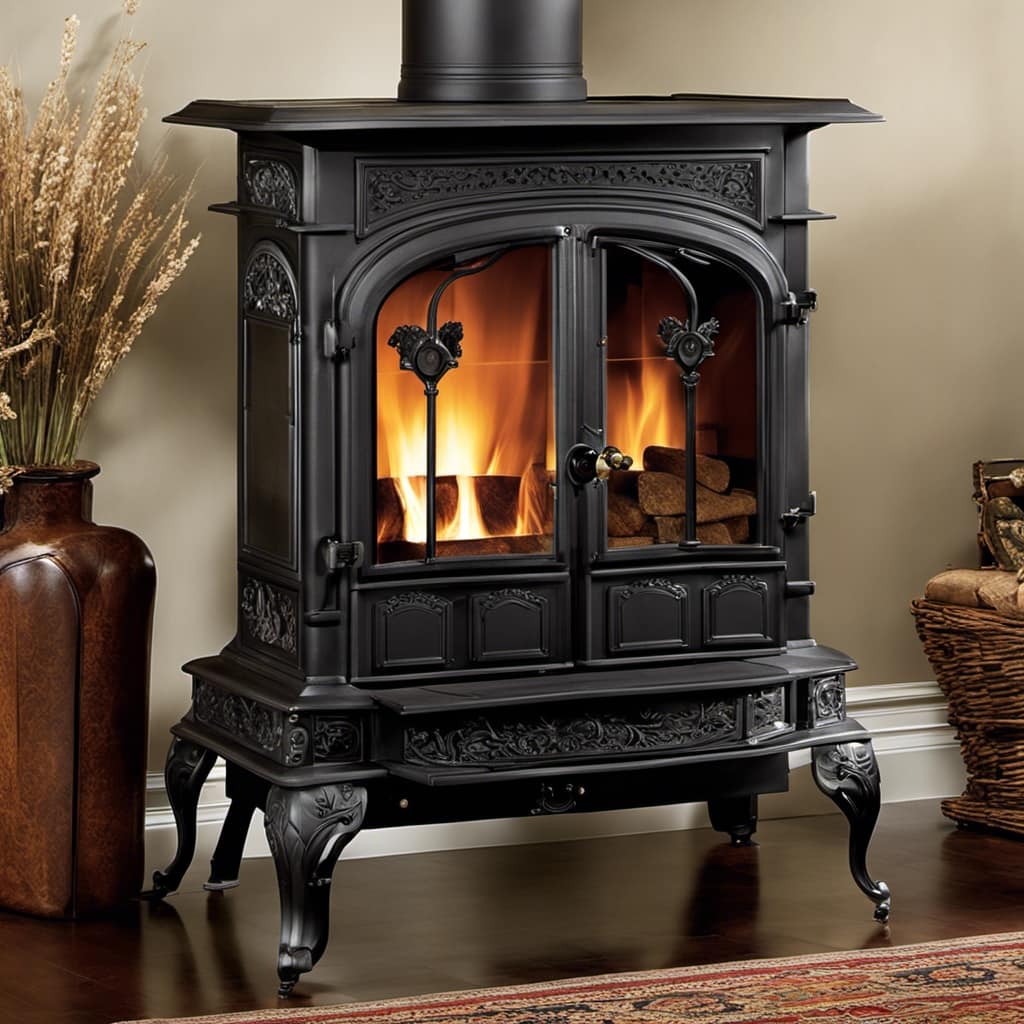
Wrapping and Fastening the Fiberglass Rope Around the Wood Stove
I can wrap and fasten the fiberglass rope around the wood stove to ensure a secure and efficient seal.
Installing fiberglass rope provides several benefits, making it an ideal choice for this application.
Firstly, fiberglass rope is highly resistant to high temperatures, allowing it to withstand the intense heat produced by the wood stove without degrading or breaking down. This durability ensures a long-lasting seal that won’t need frequent replacement.
Additionally, fiberglass rope is an excellent insulator, preventing heat from escaping and improving the overall efficiency of the wood stove. This translates into reduced energy consumption and lower heating costs.

Moreover, the flexibility of fiberglass rope allows for easy installation and a tight fit around irregular shapes, ensuring a complete seal and preventing any air leaks.
Testing and Maintaining the Seal of the Fiberglass Rope on Your Wood Stove
While testing and maintaining the seal of the fiberglass rope on my wood stove, I discovered that regular inspections and repairs are necessary to ensure optimal performance. Here are some testing techniques and troubleshooting tips that I’ve found helpful:
-
Visual Inspection: Regularly examine the fiberglass rope for signs of wear and tear, such as fraying or thinning. This can indicate the need for replacement.
-
Compression Test: Apply gentle pressure to the rope using your fingers or a tool. The rope should compress slightly but shouldn’t feel overly soft or loose. If it does, it may need to be tightened or replaced.

-
Smoke Test: Light a small piece of paper and hold it near the seal. If you notice any smoke escaping, there may be gaps or leaks that need to be addressed.
Frequently Asked Questions
How Long Does the Adhesive Take to Dry Before I Can Use the Wood Stove Again?
The adhesive typically takes about 24 hours to dry completely before using the wood stove again. To ensure a secure bond, prepare the wood stove surface by cleaning it thoroughly and roughening it with sandpaper. Apply the adhesive evenly to the rope and press firmly onto the surface.
Can I Use Any Type of Adhesive to Secure the Fiberglass Rope?
Yes, you can use different types of adhesive to secure fiberglass rope. However, it’s important to consider the pros and cons of each option. Some adhesives may provide better heat resistance or durability than others.
How Often Should I Check and Retighten the Fiberglass Rope on My Wood Stove?
I check and retighten the fiberglass rope on my wood stove every three months as recommended. Signs of rope damage include fraying or unraveling, and it’s important to address any issues promptly for safety.
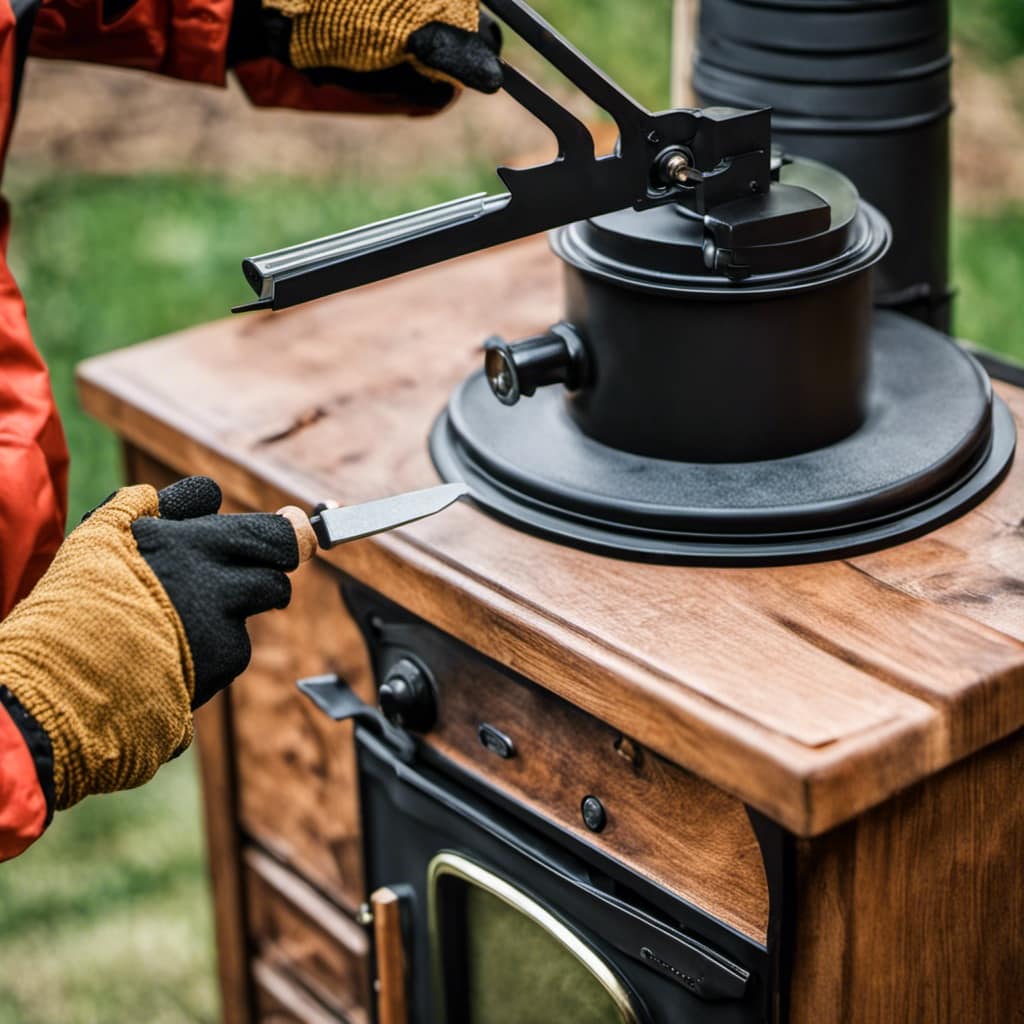
Can Fiberglass Rope Be Used on All Types of Wood Stoves?
Fiberglass rope can be used on most wood stoves, but there are pros and cons to consider. It provides a good seal, but can degrade over time. Alternatives like ceramic rope or gasket tape are also available.
Can I Paint Over the Fiberglass Rope to Match the Color of My Wood Stove?
Yes, I can paint over the fiberglass rope to match the color of my wood stove. However, there are alternative options for matching the color such as using high-temperature paint or purchasing pre-colored fiberglass rope.
Conclusion
In conclusion, properly fastening fiberglass rope to a wood stove is essential for maintaining a secure seal and preventing heat loss.
An interesting statistic to note is that a well-insulated wood stove can reduce heating costs by up to 30%.
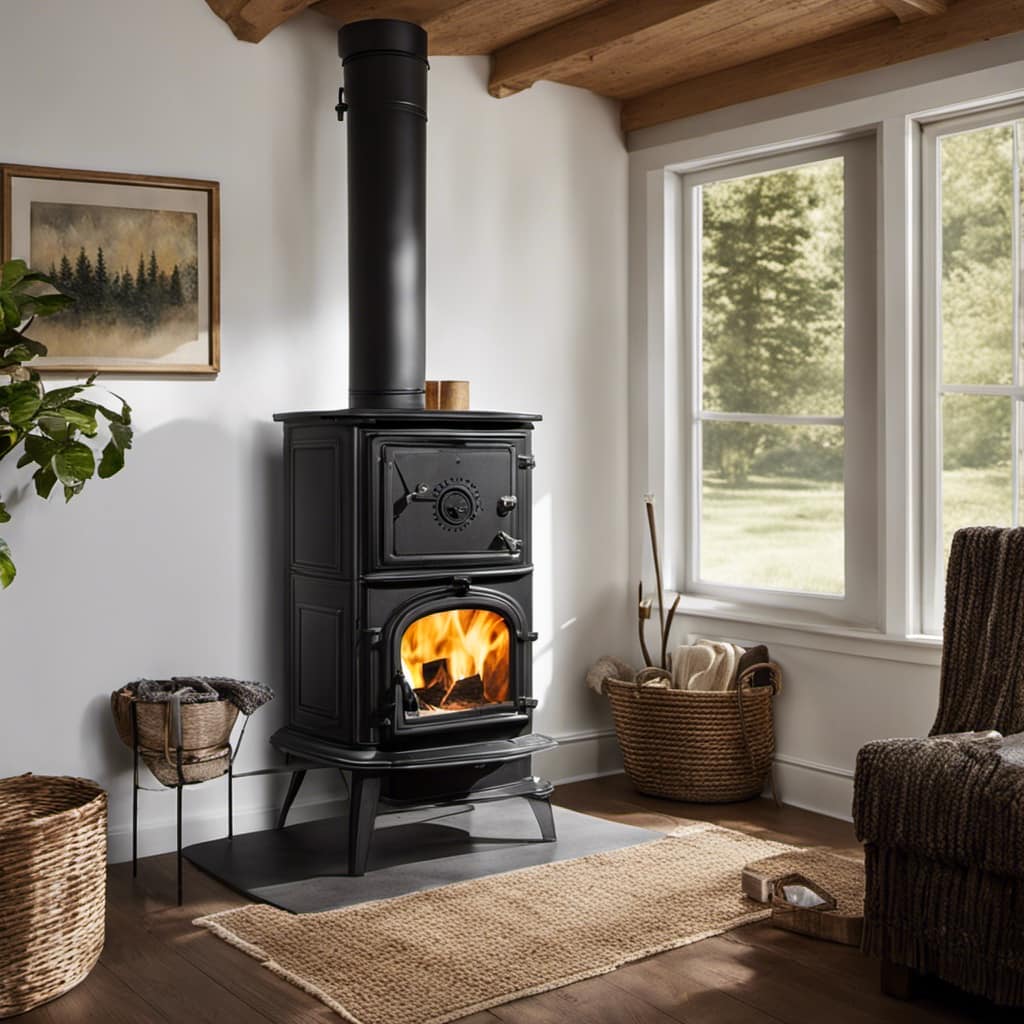
By following the steps outlined in this article, you can ensure a tight and effective seal that will improve the efficiency of your wood stove and save you money in the long run.
Growing up surrounded by the vast beauty of nature, Sierra was always drawn to the call of the wild. While others sought the comfort of the familiar, she ventured out, embracing the unpredictable and finding stories in the heartbeat of nature.
At the epicenter of every remarkable venture lies a dynamic team—a fusion of diverse talents, visions, and passions. The essence of Best Small Wood Stoves is crafted and refined by such a trio: Sierra, Logan, and Terra. Their collective expertise has transformed the platform into a leading authority on small wood stoves, radiating warmth and knowledge in equal measure.




